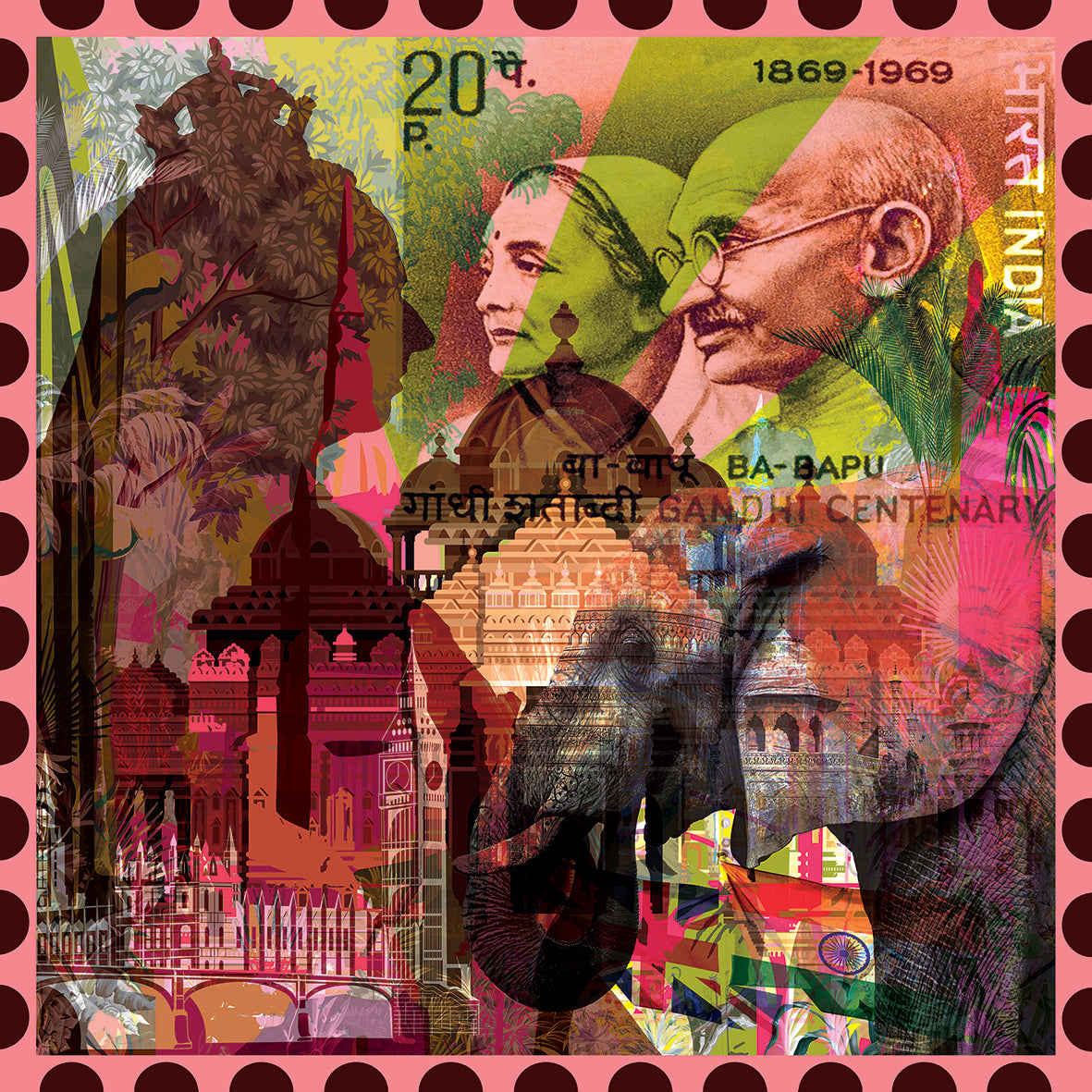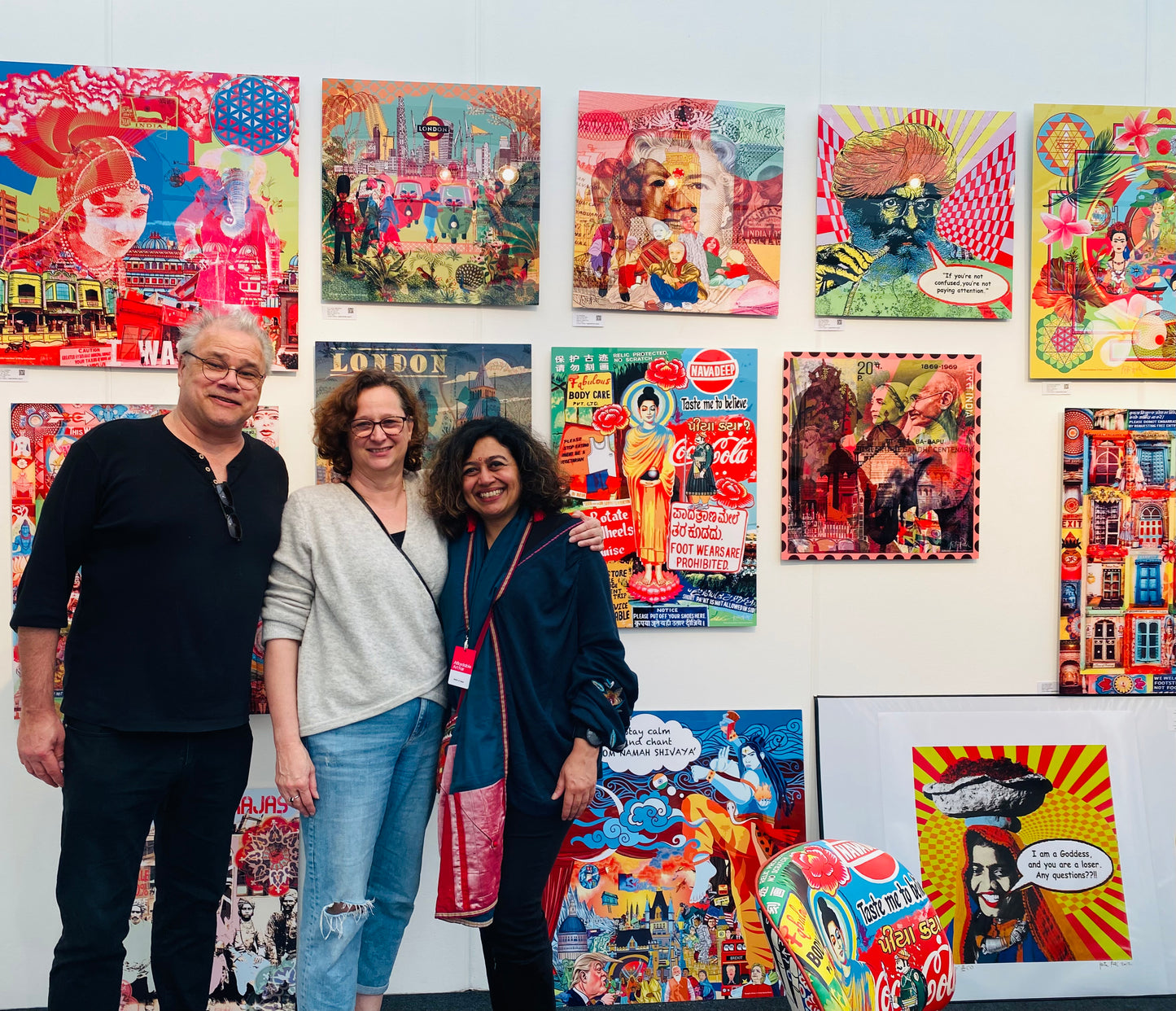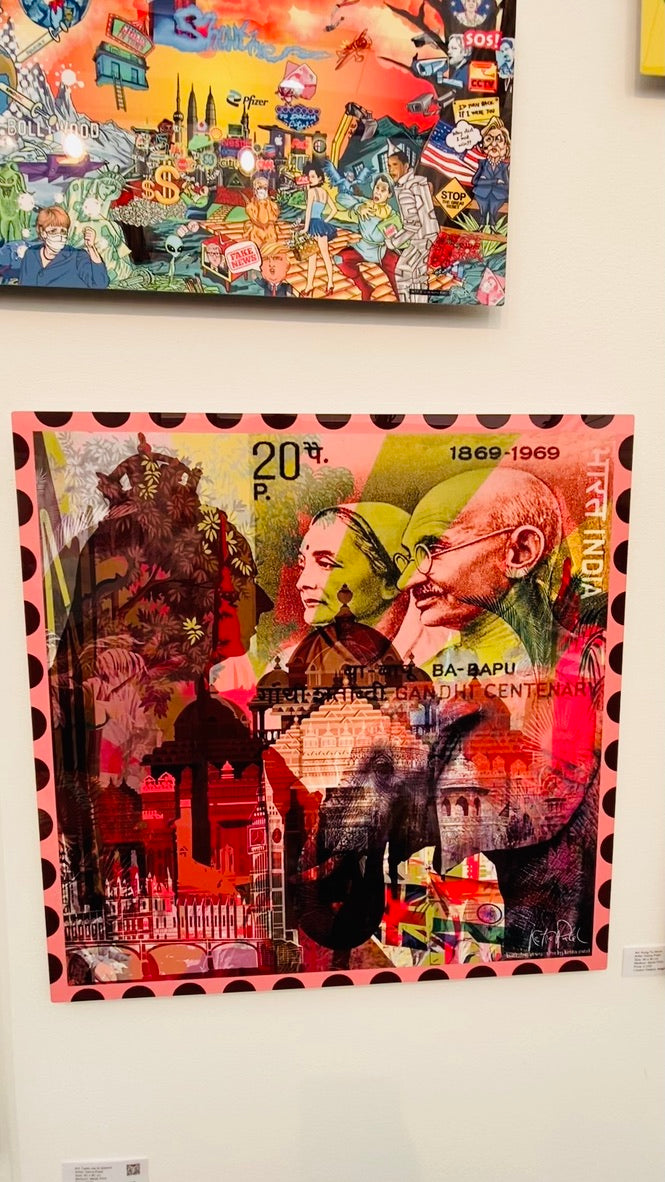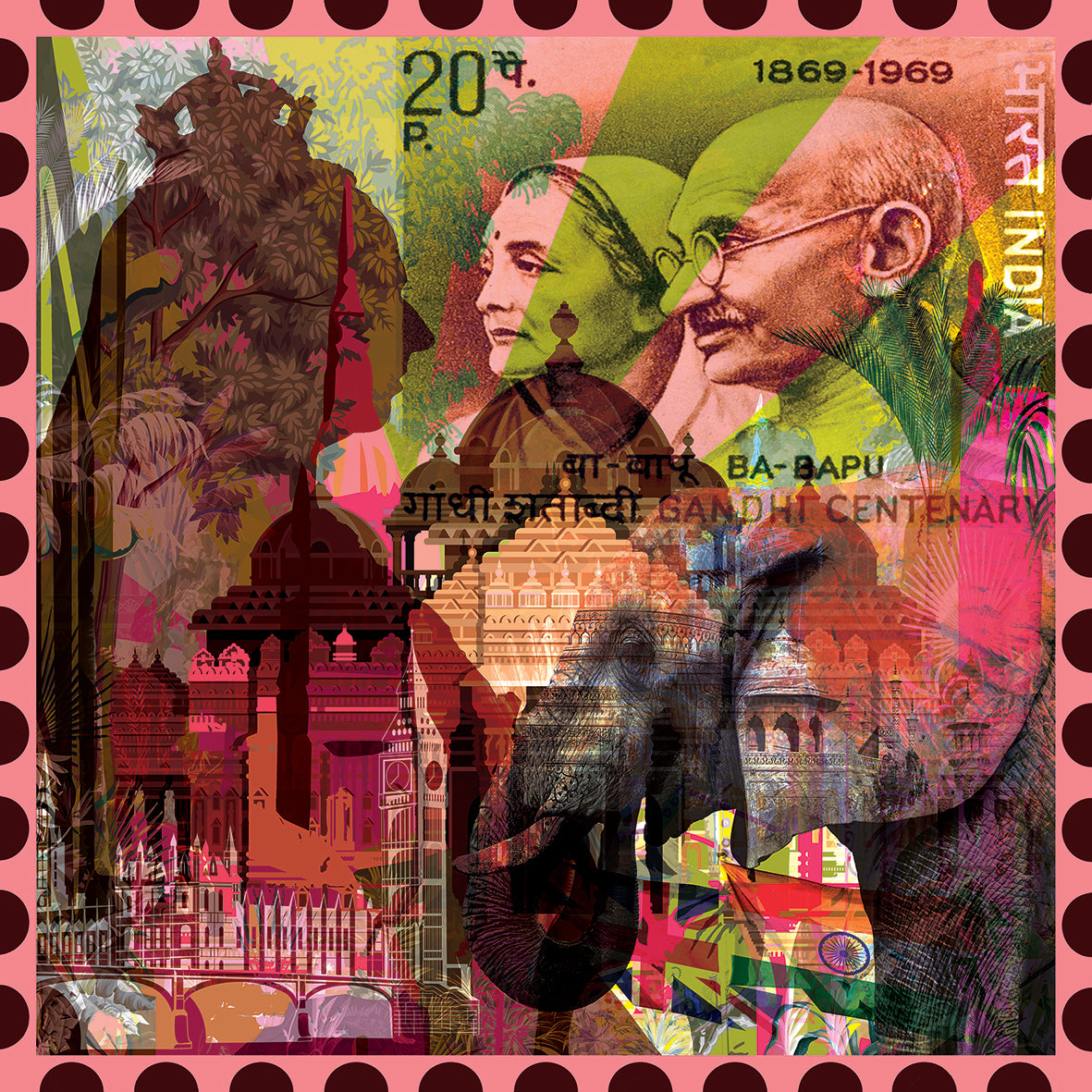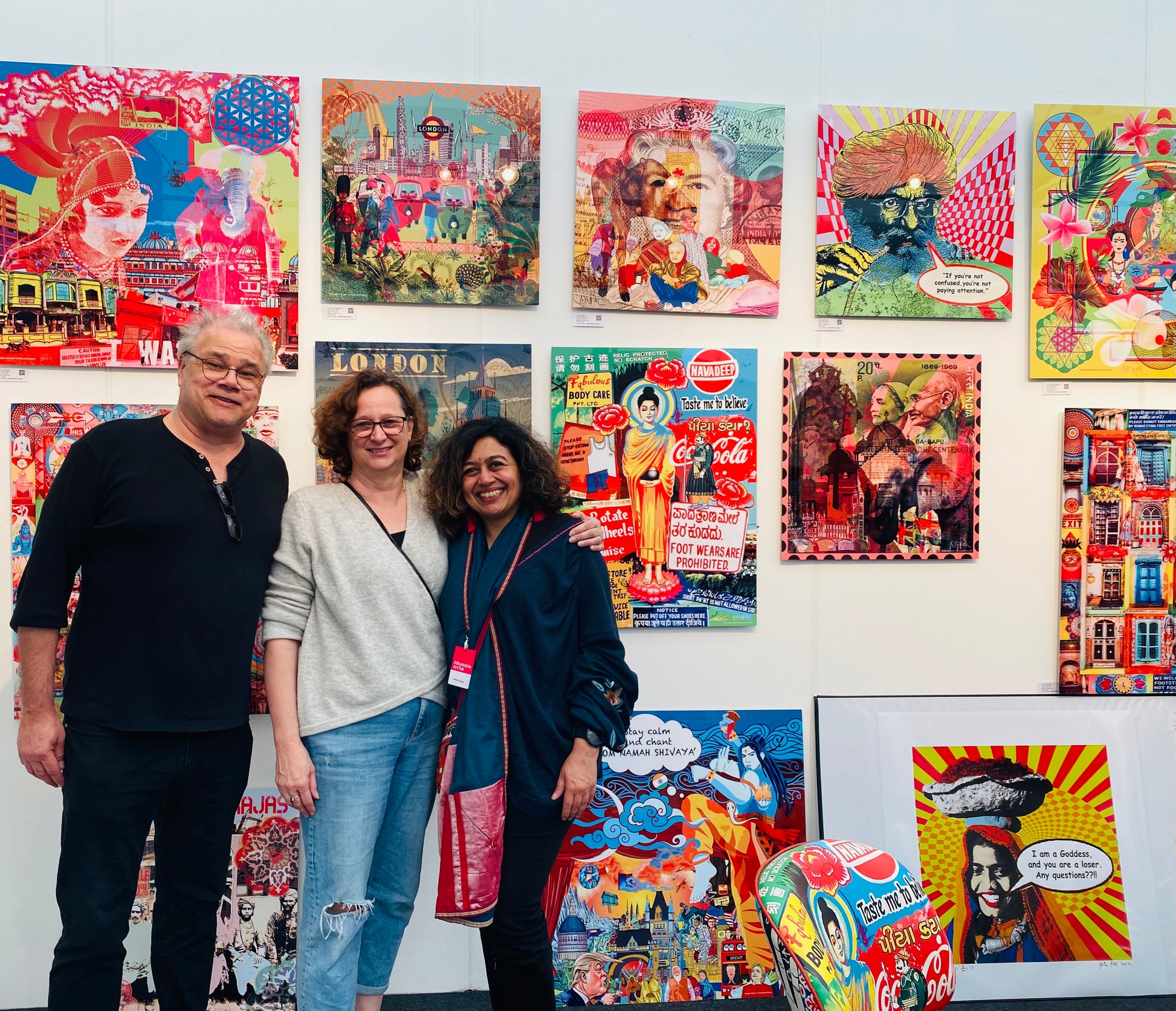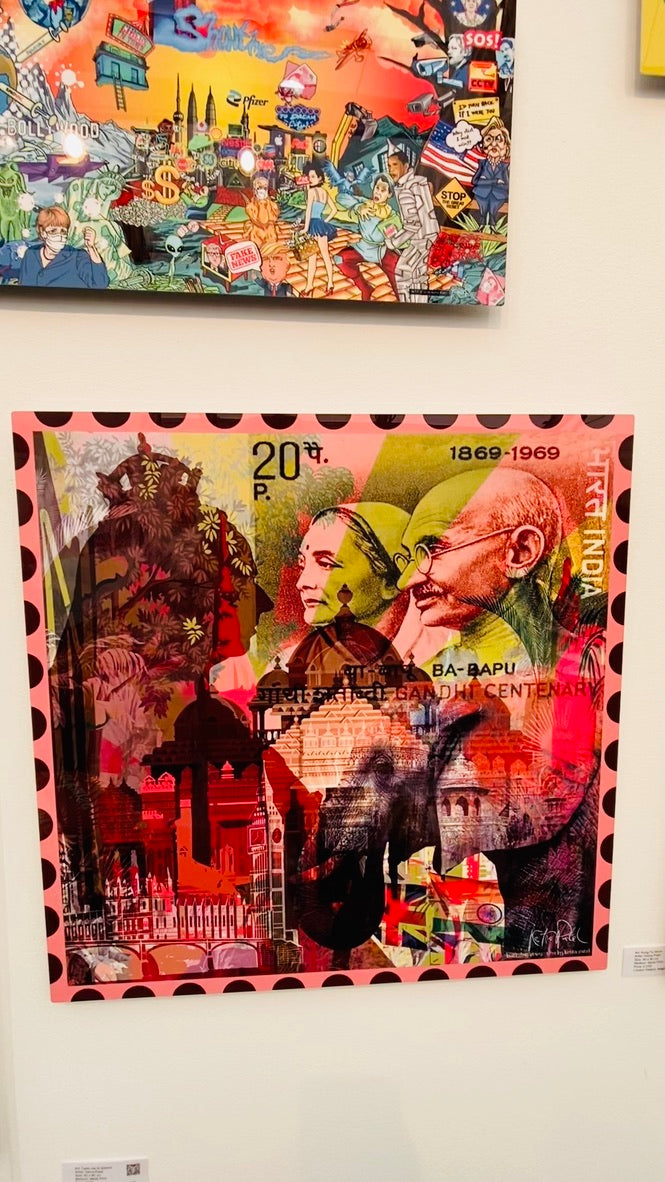KETNA PATEL ART STUDIO
Back to the Future
Back to the Future
Couldn't load pickup availability
Share
Back to the Future: A Fusion of History, Legacy, and Renewal
Back to the Future is a compelling artwork that weaves together the threads of history, legacy, and the ever-renewing cycles of life. In this evocative piece, the silhouette of Queen Victoria stands juxtaposed with a postage stamp featuring the iconic figure of Mahatma Gandhi and his wife, Kasturba.
Queen Victoria's silhouette represents the bygone era of British colonialism, where the British Empire held dominion over vast territories, including India. It is a powerful symbol of the imperial past, a period marked by complex historical narratives and struggles for independence.
In stark contrast, the presence of the Gandhi postage stamp represents a pivotal moment in history. Gandhi's philosophy of nonviolence and his tireless efforts in the struggle for Indian independence resonate not only with the Indian subcontinent but also with the global fight for justice and civil rights. His image on the postage stamp signifies hope, resilience, and the power of peaceful resistance.
The juxtaposition of these two figures within the artwork talks of a dialogue across time, bridging the historical gap between colonial rule and the eventual triumph of self-determination. It prompts viewers to reflect on the profound transformations that have occurred over the years, from the days of colonial subjugation to the dawn of independence and beyond.
The colour scheme, resembling dried blood and young foliage, symbolises the inherent cyclical nature of history and life. It signifies the inevitability of change and renewal, as old systems and structures give way to new beginnings and growth. The dried blood represents the struggles and sacrifices of the past, while the young foliage embodies the potential for regeneration and the emergence of new possibilities.
"Back to the Future" serves as a poignant reminder of the enduring impact of history on our present and the limitless potential for renewal and transformation. It encourages viewers to contemplate the legacy of these historical figures and their contributions to the ongoing evolution of our world.
Each edition is a finely crafted piece of art, individually titled, numbered, and signed by Ketna Patel. Depending on the work’s nature, it is produced either as a C-Type print on Fuji gloss paper or as a Giclée print on Hahnemühle Photo Rag paper, both ensuring archival durability and suitability for diverse climates, including humid environments like Singapore. Prints are created at esteemed studios in London, Singapore, or New Delhi, using premium archival materials. Limited to 50 copies per size (150 total unframed), each is shipped carefully rolled in a poster tube. For a slick, glossy, contemporary look, the artwork is also offered as Acrylic or HD Metal prints, each limited to 25 per size. Acrylic prints are made on 5mm thick, 70% recycled glossy acrylic with a premium foil backing that amplifies colour richness and depth, framed in white, black, or natural wood. HD Metal versions utilize dye sublimation on scratch-resistant, waterproof aluminium, producing vivid, sharp images suited for indoor or outdoor display with a frameless floating effect. Both formats come with prefitted hanging systems and spacers for easy installation. Each piece is made to order with a 10-day production timeframe, ensuring exclusivity and meticulous record-keeping to prevent duplication.
